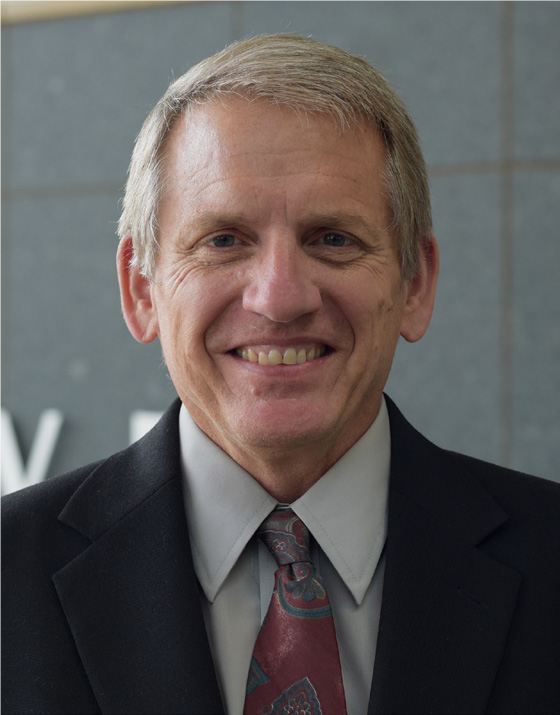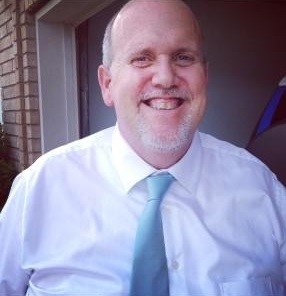
Why manual load shedding is sometimes necessary
How would you describe the electric grid to a non-technical friend? Of course, you would talk about different types of generators, load delivery points, and the wires that connect everything together. But, would you include your house, or every appliance inside your house that is plugged into an outlet? The reality is that every device injecting (or withdrawing) electric power from the power system is a part of the grid and must interact and be balanced to maintain stable, reliable operation. The North American power grid has been referred to as the “world’s largest and most complicated machine.” This description is very useful in understanding the importance of balance between input and output, and the interaction between producers (i.e., generators) and consumers.
Imagine a giant merry-go-round with enough horsepower for 1,000 people to ride. With only 500 people on board, the ride is half-loaded and should have plenty of power to spin at a constant speed. As more and more people get on to ride, it will take more power to keep turning at the same speed. If more than 1,000 people attempt to ride, or if the ride’s motor cannot produce enough power, then the ride will slow down, and may eventually stop. Maintaining this balance between the number of riders and the capability of the machine is analogous to the function of a NERC registered Balancing Authority (BA). Each BA is responsible for maintaining demand and resource balance within their respective balancing area—power supply must meet power demand on a continual basis.
Besides maintaining the balance between supply and demand, every piece of equipment or facility on the power system (generator, transmission line, transformer, etc.) has a physical operating limit that must be respected. These facility ratings are essential in the reliable planning and operation of the Bulk Electric System (BES). If any component exceeds its limit, it can fail and possibly create a cascading failure of other equipment. System operators are responsible for operating or directing operation of the BES in real-time at individual control centers. Under normal conditions, system operators monitor conditions and regulate the power supply and its path to load (transmission and distribution) to meet demand and maintain system operating limits. However, like on the merry-go-round, emergency conditions can occur. If demand is too high and more generation is not available, there is a need to reduce customer demand to maintain the integrity of the electric system and to prevent a much larger impact (the entire merry-go round stops). When all other options have been exhausted regarding interruptible and non-firm loads, and the system is still stressed, shedding of load is required before the system deteriorates into a widespread condition that can no longer reliably operate.
Load shedding is the unplanned, but controlled, interruption of firm demand that may be taken to address an emergency on the BES. Firm demand is any load or demand that the power supplier is obligated to provide, except when system reliability is threatened or during emergency conditions. Load shedding may occur automatically for pre-programmed conditions, or it may be manually implemented by a system operator. Load shedding is a common part of system operator training and vocabulary, but is viewed as a last resort to protect the BES from instability.
Many NERC Reliability Standards make it clear that system operators must have emergency plans that include timely load shedding to respond to emergencies and avert a more widespread, cascading system event. Emergency plans for load shedding must identify and address those areas that have been selected for automatic load shedding, manual load shedding, and areas with critical functions (e.g., public safety) that should be excluded. Every registered BA, Transmission Operator, and Reliability Coordinator is required to maintain emergency load shedding plans and to train personnel on how and when to implement these plans on a regular basis. In addition, strict regulatory reporting is required when any type of load shedding plan is executed.
Load shedding is not an action that any organization or system operator takes lightly. It is a last resort and only used to protect the overall power system by maintaining stability and preventing a large scale cascading outage.
MRO’s Reliability Advisory Council (RAC) is responsible for increasing outreach and awareness on important reliability topics, such as this one. The RAC has decided to publish a three-part series on manual load shedding given how critical it is to preserving reliability of the North American bulk power system during times of system duress. This is the first article in this series – articles two and three will be published in subsequent editions of Midwest Reliability Matters.
– Dick Pursley, Reliability Advisory Council Chair, CJ Brown Reliability Advisory Council Member, and John Stephens, Reliability Advisory Council Member
About the Authors:

C.J Brown, Southwest Power Pool
C.J. Brown received his bachelor of science in applied mathematics/economics from the University of Central Arkansas in 2000 and was NERC Reliability Coordinator certified in 2007. He has been with Southwest Power Pool (SPP) since 2006 and is currently the director of system operations at SPP. His responsibilities include oversight of the SPP real time operations for tariff administration, markets, balancing authority and reliability coordination functions in the Eastern and Western interconnections. He has over 20 years of experience in the electric utility industry with roles in generation, power marketing, market monitoring and system operations.

Dick Pursley, Great River Energy
Dick Pursley is the Director, Operations and Transmission Services at Great River Energy, where he has oversight of control center operations and support, along with substation and transmission line construction and maintenance activities. Pursley has worked in the electric utility industry for 31 years, the last 21 of which have been with Great River Energy in the utility operations area. He has served on several NERC and MRO organizational groups and is an active member of the NERC Event Analysis Subcommittee and MRO’s Reliability Advisory Council. Pursley earned his BS in electrical engineering and MS in agricultural engineering from the University of Minnesota.

John Stephens, City Utilities of Springfield
John Stephens has been the Director, Power System Control at City Utilities of Springfield for 24 years. He is responsible for real-time Transmission Operations and has experience in wholesale power market transactions, open access transmission policy, and NERC compliance. Stephens has been an active participant on many SPP organizational groups and also serves on NERC and MRO working groups and committees, including the NERC Reliability Issues Steering Committee, NERC Reliability and Security Technical Committee, and MRO Reliability Advisory Council. Stephens is a registered Professional Engineer in the state of Missouri and holds a BSEE from Rose-Hulman Institute of Technology. He earned his MSEE from Clemson University.
DISCLAIMER
MRO is committed to providing non-binding guidance to industry stakeholders on important industry topics. Subject matter experts from MRO’s organizational groups have authored some of the articles in this publication, and the opinion and views expressed in these articles are those of the author(s) and do not necessarily represent the opinions and views of MRO.